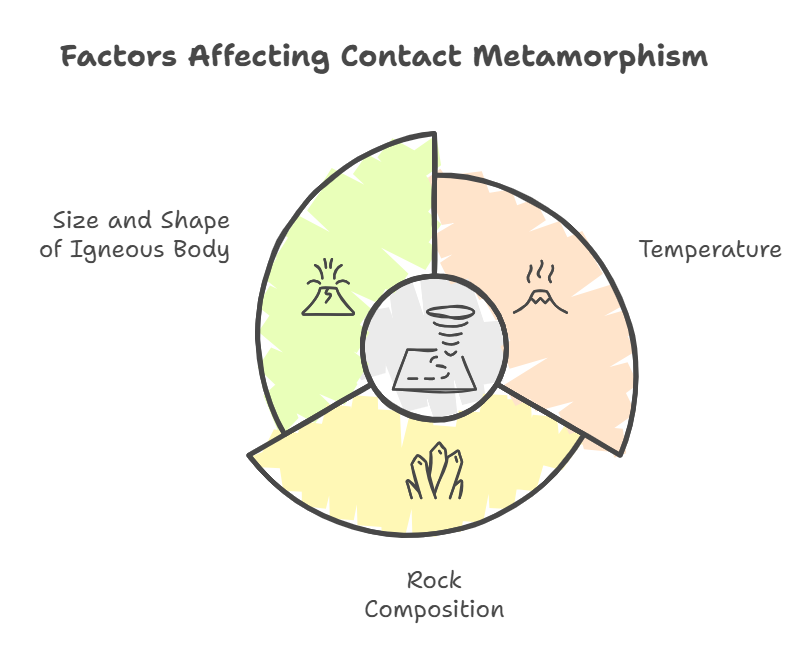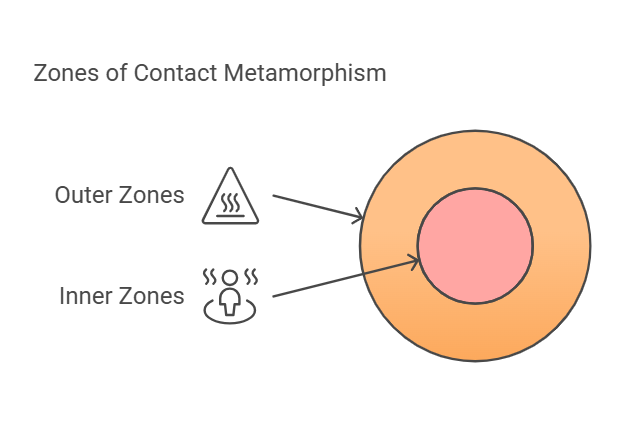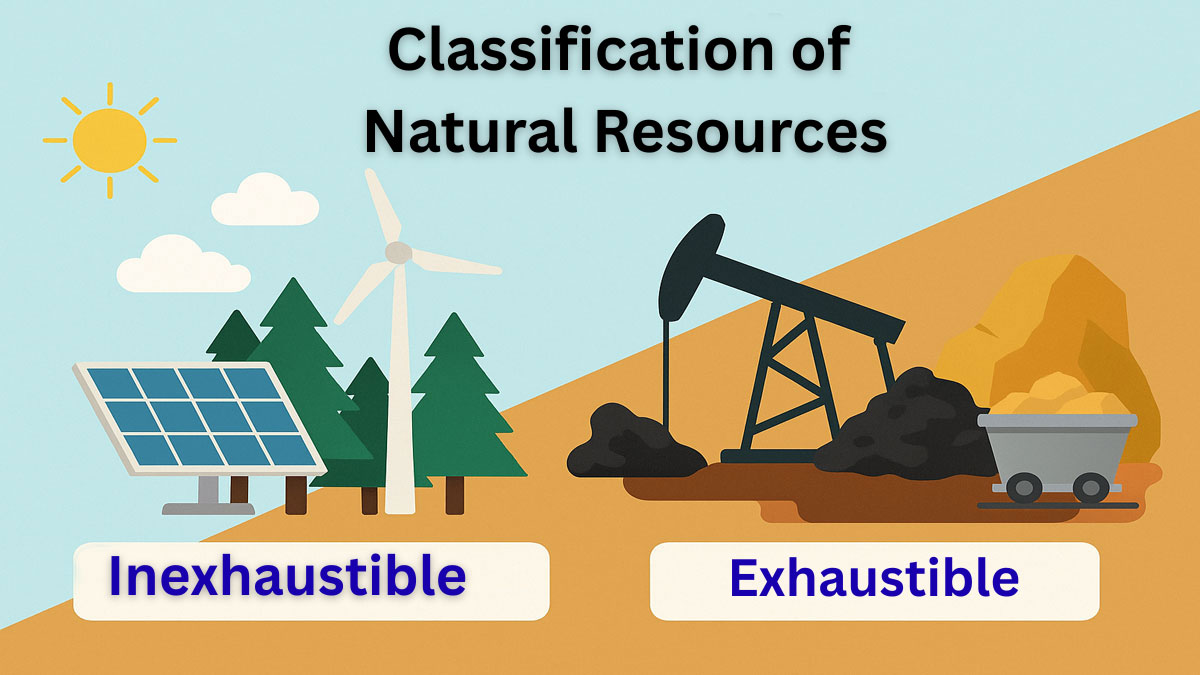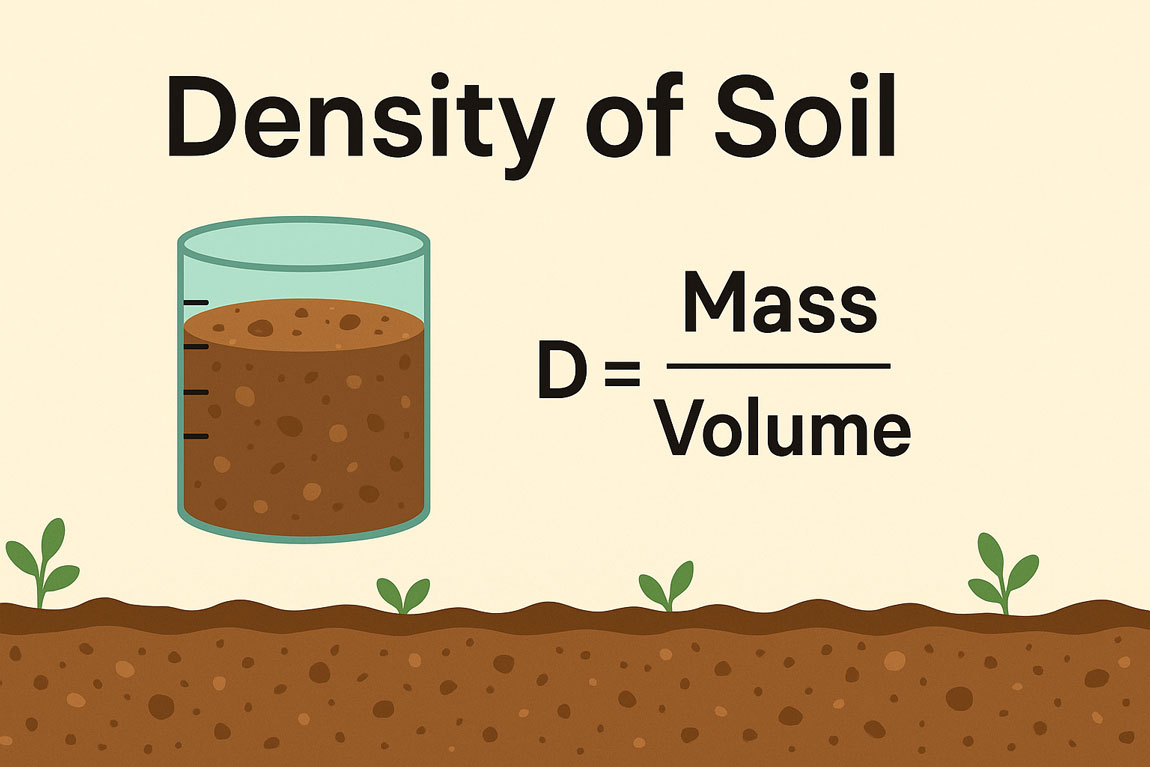Contact Metamorphism is a type of metamorphism of a local extent that affects the country rocks around the magma bodies injected along fractures or natural zones of weakness between rock layers.
The magmas are the sources of heat, mass, and mechanical energy necessary for this type of metamorphism. The zone where it occurs is called the contact aureole, and the products of such metamorphism are called contact rocks.
The thickness of the aureole ranges from the millimeter to the kilometer scale. The intensity of contact metamorphism decreases from the innermost to the outermost parts of the aureole. It is customary to separate the metamorphic effects caused by the magma on its wall rocks (exomorphism) from those induced by the wall rocks on the magma itself (endomorphism).
In addition to the change cause by heat, hot dissolved mineral rich fluids ( steam and other gases introduce other elements ( often rare or unusual metals) into the surrounding zone of contact metamorphism.
Characteristics of Contact Metamorphism:
- Temperature is typically its dominant control.
- It is characterized by the growth of new metamorphic mineral grains in random orientations since any deformation is usually too weak to produce marked mineral alignments.
- It is also known as thermal metamorphism, and its typical products are fine-grained rocks known as hornfels whose metamorphic minerals have intergrown in a random interlocking pattern because of the absence of strain as they grew.
Occurrence of Contact Metamorphism:
It occurs when the country rock is exposed to high heat. In most cases, proximity to magma produces contact metamorphism.
Factors Affecting Contact Metamorphism:
Several elements impact the volume and traits of touch metamorphism:
Temperature: The better the temperature, the more the diploma of metamorphism.
Rock Composition: Mineralogical make-up determines the ensuing metamorphic rock.
Size and Shape of the Igneous Body: Larger intrusions generate greater huge metamorphic aureoles.

Zones of Contact Metamorphism:
It usually paperwork awesome zones inside a metamorphic aureole, where:
Inner Zones: They revel in severe metamorphism because of proximity to the warmth source.
Outer Zones: They display much less alteration, with mineral modifications diminishing as the distance Increases from the intrusion.

Texture of Contact Metamorphism:
- Typically, shallow pluton aureoles (low-P) around intrusive bodies.
- Crystallization / Recrystallization is near static.
- Monomineralic with low D surface energy.
- Granoblastic Polygonal
- Larger D.S.E
- Decussate
- Isotropic texture (hornfels, granofels). Relict textures are common.
- Maybe some stress due to moderate P or emplacement of the pluton.
- Minerals are often equidimensional – Quartz and Carbonates maybe isotropic even when regionally met and other minerals foliated. Elongated minerals typically randomly oriented.
Importance of Contact Metamorphism in Geology:
It is essential to understanding geological processes and features. Its significance includes:
Information about heat distribution:
The study of metamorphic halos reveals information about the Earth’s thermal dynamics.
Mineral formation:
Valuable mineral deposits, such as skarn, often form in contact with metamorphic zones.
Educational significance:
It provides a clear example of thermally induced geological changes.
Conclusion:
Contact metamorphism, which is generated by the heat of igneous intrusions, demonstrates thermal energy’s transforming ability in geology. This process not only produces unique rocks and minerals, but it also sheds light on Earth’s thermal and geological history. It helps us acquire a better understanding of the dynamic processes that shape our planet.






